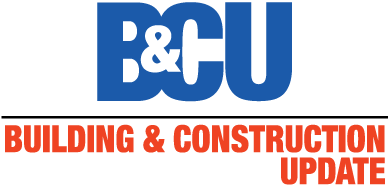Tiling Triumphs: Unlocking the Secrets of Tile AdhesivesEvolution & Transforming India’s Construction Industry
Understanding Tile Adhesives:
Tile adhesive, commonly known as tile cement or thin-set mortar, is a specialized bonding material used to securely fix tiles onto various surfaces such as walls, floors, and countertops. Unlike tradi-tional mortar, modern tile adhesives offer superior adhesion, enhanced flexibility, and ease of application, making them an essential component in contemporary construction and interior design.
Evolution of Tile Adhesives:
While the concept of tile adhesives has been around for centuries, modern formulations emerged in the mid-20th century with the advent of cement-based adhesives. In India, the widespread adoption of tile adhesives began in the late 1990s and gained significant momentum in the 2000s. Factors such as rapid urbanization, evolving construc-tion techniques, and an increasing preference for aesthetically appealing, durable tiling solutions have fuelled the growth of this industry.
Composition and Functionality:
Tile adhesives typically consist of a blend of cement, graded sand, and performance-enhancing additives such as polymers and water-retention agents. These ingredients work synergistically to improve workability, strengthen bonding capabilities, and enhance resi-stance to water, heat, and environmental fluctuations.
Types of Tile Adhesives in the Indian Market:
The Indian market offers a wide range of tile adhesives, classified based on their properties and applications:
Type 1: Basic adhesive for porous tiles (clay, ceramic) up to 300×300 mm used in dry interior areas on cement-based substrates.
Type 2: Enhanced adhesive for less porous tiles (vitrified, porcelain, stone) of any size, including wet areas, submerged areas, and exterior floors.
Type 3: High-performance adhesive for all tile types (ceramic, porcelain, stone) used on exterior walls (plaster or concrete).
Type 4: Adhesive for all tile types (except metal and engineered stone) used on drywall boards (gypsum, plywood, etc.).
Type 5: Heavy-duty adhesive for all tile types, including engineered stone and metal, used on glass or metallic substrates.
Essentially, the standard provides a classification system for tile adhesives based on their performance and suitability for different applications in the Indian construction industry.
In-Depth Look at Type-3 Tile Adhesive:
Type-3 tile adhesive is a game-changer in the tiling industry, offering superior performance, durability, and adaptability across various applications.
Applications: Type-3 adhesive is widely used for:
- Fixing porcelain, vitrified, and natural stone tiles.
- Installing large-format tiles with minimal joint gaps.
- Securing tiles in high-moisture areas such as bathrooms, swimming pools, and terraces.
- Applying tiles on external facades to withstand harsh weather conditions.
- Mounting glass mosaic tiles in decorative and functional applications.
Key Properties:

- Exceptional Bond Strength: Provides a long-lasting and secure bond between the tile and substrate, reducing the risk of de-bonding.
- High Flexibility: Accommodates substrate movement and temperature variations, preventing tile cracks.
- Superior Water Resistance: Ideal for wet areas, ensuring durability against moisture and humidity.
- Easy Workability: Allows smooth application with extended open time for adjustments and precise tile placement.
Suitable Application Areas:
- Residential: Bathrooms, kitchens, balconies, and exterior walls.
- Commercial: Shopping malls, hotels, hospitals, and corporate offices.
- Industrial: Warehouses, factories, and production facilities.
Best Practices (Do’s & Don’ts):
Do’s:
- Ensure the substrate is clean, level, and dust-free before application.
- Use a notched trowel of the correct size for an even spread of adhesive.
- Follow manufacturer guidelines for mixing ratios and application techniques.
- Allow sufficient curing time before grouting or exposing the surface to heavy loads.
Don’ts:
- Avoid applying adhesive on structu-rally weak or damaged substrates.
- Do not apply excessive adhesive thickness, which can lead to bonding failure.
- Refrain from using expired or improperly stored adhesive.
- Do not expose the adhesive to extreme environmental conditions before it sets.
Benchmarking Against European Standards (C2TES1):
Type-3 adhesive in India closely aligns with the C2TES1 classification in the European standard EN 12004. Both exhibit high adhesion strength, flexibility, and moisture resistance, making them suitable for demanding applications. However, regional variations in environ-mental conditions and construction practices may result in slight differences in formulation and performance testing criteria.
Scope for Innovation & Future Improvements:
Despite its impressive performance, continuous advancements can further elevate Type-3 adhesives:
Sustainability: Incorporating eco-friendly raw materials and low-carbon production methods.
Enhanced Strength & Durability: Developing next-generation formula-tions with increased adhesion and resistance to extreme conditions.
Specialized Formulations: Tailoring adhesives for unique applications, such as glass tiles on metal or stone tiles on wooden substrates.
Conclusion:
Tile adhesives have revolutionized the Indian tiling industry, offering reliable and efficient alternatives to traditional fixing methods. With its superior adhesion, flexibility, and moisture resistance, Type-3 tile adhesive has become the preferred choice for both residential and commercial projects. As the industry evolves, advancements in adhesive technology will continue to shape a future marked by durability, sustainability, and innovation in tile installations.
BirlaNu Limited
Web : www.birlanu.com






